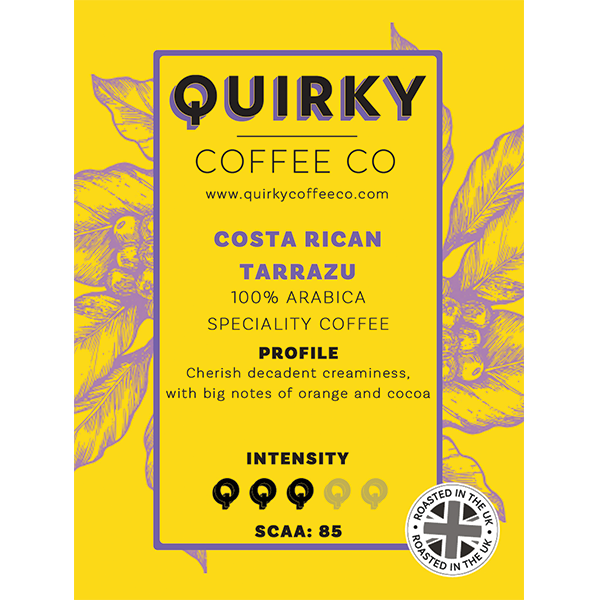How it all began…
Coffee production in the country began in 1779 in the Meseta Central which had ideal soil and climate conditions for coffee plantations. In the 19th century and following the country’s independence from Spain in 1821 the Costa Rican government strongly encouraged coffee production. The municipal government gave away free coffee seeds to encourage this and records show there were around seventeen thousand trees in Costa Rica in that era.
The Costa Rican government continually supported farmers; in 1825 coffee was exempt from certain taxes and six years later in 1831, the government ruled that if anyone grew coffee on fallow land for five years, they could claim ownership of the land.
Did you know?
Costa Rica was the first Central American country to have a coffee industry.
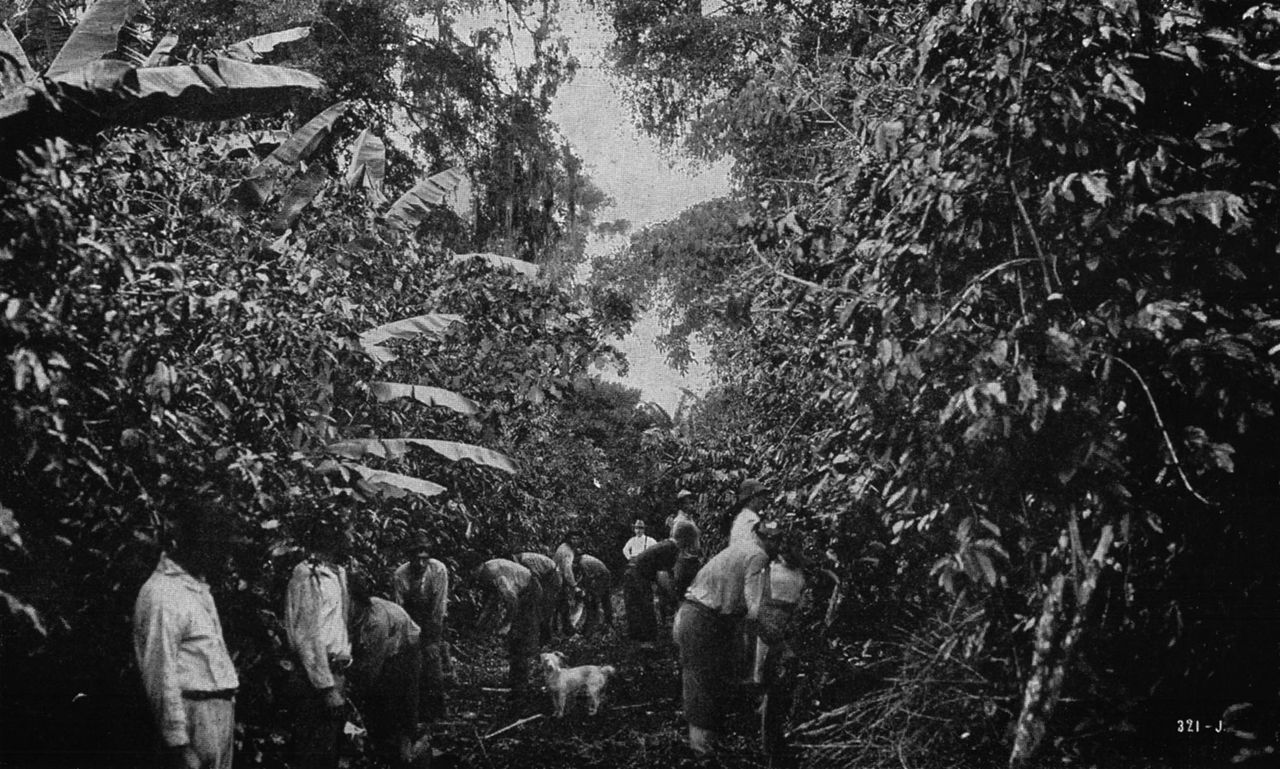
Early plantation workers in Costa Rica
Coffea arabica
First imported to Europe through Arabia (from whence it takes its name) was introduced to Costa Rica directly from Ethiopia. Arabica coffee is the heart of coffee production in Costa Rica so much so that Robusta coffee was made illegal by the Costa Rican government in 1989 – this speaks volumes about how the country is commited to outstanding quality and high value coffee.
If you are new to speciality coffee and need somewhere to start your taste sensation journey you can’t go wrong with freshly roasted coffee beans from Costa Rica.
Exporting
The first coffee export to England was in 1832 via Chile under the name Café Valparaiso. From 1846 to 1890 coffee was Costa Rica’s only export product and it continues to be a very important crop.
In 1843 Costa Rica was directly exporting to the United Kingdom via the Guernseyman William Le Lacheur, captain of the English ship, The Monarch. Not long after this English became increasingly invested in Costa Rica and this relationship led to the establishment of the Anglo-Costa Rican Bank in 1863 – providing finance for the growth of the industry. The British became the principal customer for exports until World War II.

William Le Lacheur
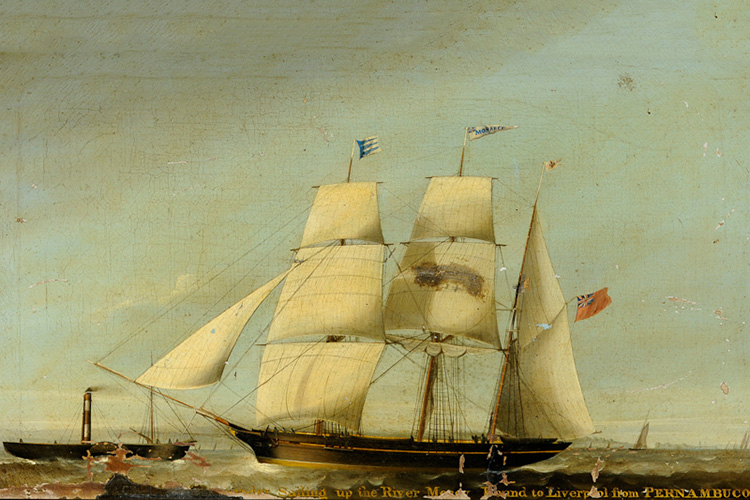
The Monarch
Development of Costa Rica
Between 1846 and 1890, nearly fifty-years, coffee was the sole export of the country. Coffee transformed the Costa Rican economy, driving infrastructure such as the creation of the railway, the “Ferrocarril al Atlántico” linking the country to the Atlantic as well as funding the San Juan de Dios Hospital.
More funding was now available for young aspiring academics to study in Europe and the National Theatre itself in San José is a product of the first coffee farmers in the country.
Costa Rica is today a small coffee-producing country, exporting around 1.8 million 60kg bags versus Brazil’s 45 million. However, the focus on quality is a continuing ethos in Costa Rica and in more recent years many producers who once sold to their local mill have now constructed their own micro-mills. This has allowed the farmers to be innovative, working to produce a high standard product.
Fun Fact #1
“Pura Vida”
This is the national slogan of Costa Rica and can be translated in many ways such as, “full of life,” “this is really living,” “this is the life,” “awesome”, and it is a synonym of “Hakuna Matata”.
Coffee growers in Costa Rica
There are more than 50,000 coffee growers in Costa Rica, and around 90% of them are small producers with less than 5 hectares (12 acres) each. The micro-mills have allowed single producers or small groups of farmers to process their own beans, control and add value to their crops, and trade directly with buyers around the world. The traceability to buyers and roasters around the world is exceptional, not only directly to the farm but in some cases an individual slope, or side, of that farm.
Women’s coffee
The Women in Coffee Alliance of Costa Rica (WCACR) is a branch of the International Women’s Coffee Alliance (IWCA). The WCACR started in 2005 and it now has 17 company-members from 7 regions that include roasters, exporters, millers and growers.
‘Women’s Coffee’ does not strictly support just women. A premium is paid directly to women but the entire family is involved in most operations. The nature of the women’s coffee movement is to ensure women are given access to money generated from the work they do on their farms, which perhaps would be spent in other ways if paid directly to the men.
Traceability
Land ownership by coffee growers in Costa Rica is extremely common with 90% of producers owning their own small to medium-sized farms. This has helped younger generations to continue family farms in spite of unstable markets – a trend that is sadly not common everywhere in the world. (It also makes it possible to trace most Costa Rican coffee to an individual farm or particular co-operative).
Coffee and tourism
Costa Rica is the most developed and considered the safest of the Central American countries. Ecotourism is growing year upon year with many tours on coffee farms. To see how coffee farming works up close, with some plantations offering overnight accommodation is an amazing opportunity for both the coffee farming communities and the country.
Did you know?
Coffee in Costa Rica is available as certified Bird-Friendly. Farms have additional requirements to have taller trees in which birds can nest in. A lack of taller trees to shade coffee means that birds are left without safe nesting grounds and biodiversity is impacted.
8 Coffee regions of Costa Rica
Costa Rica has the luxury of eight different coffee regions that produce their own unique flavour of coffee. The climate being so diverse in Costa Rica means that there is a huge variery of microclimates and humidity. This is a perfect enviroment for growing different variets of coffee beans.
The typical varieties of arabica coffee produced are: Typica, Caturra, Catuai, Villa Sarchi, Bourbon & Gesha.

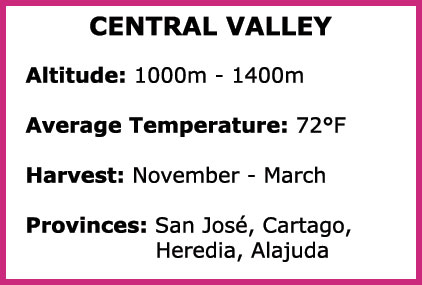
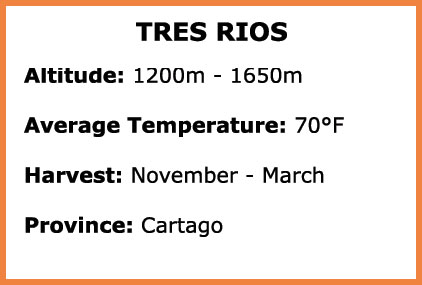
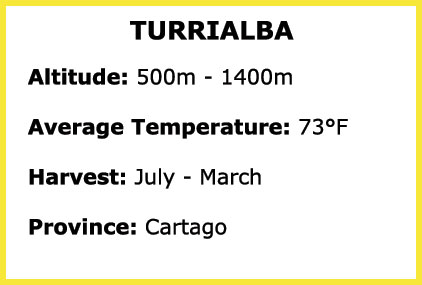
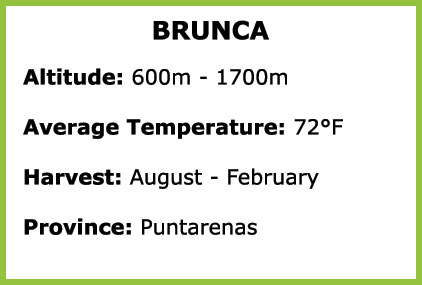
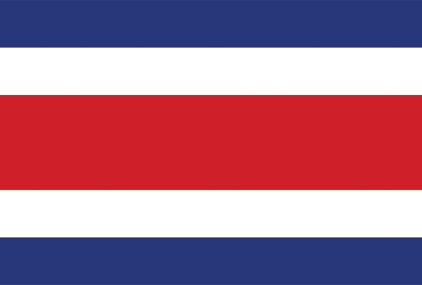

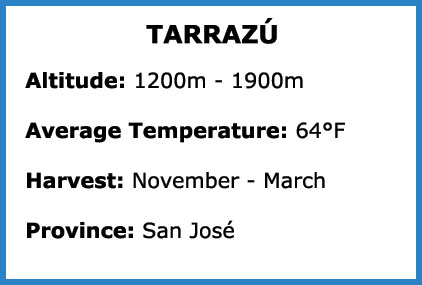
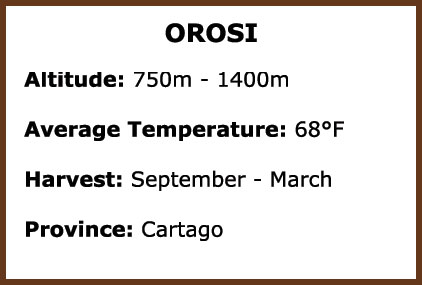
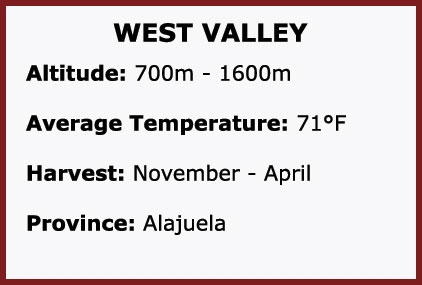
Quirky Coffee Co’s
Costa Rican Tarrazú
Our Costa Rican Tarrazú is an incredibly classic and stylish coffee. Cherish decadent creaminess, with big notes of orange and cocoa. Available in 250g, 500g or 1kg bags, freshly roasted to your door.
We love Tarrazú
The region of Tarrazú has a long-standing reputation for quality and excels in the production of high graded coffee, with many awards of the prestigious Cup of Excellence. Pronounced “Tar-ah-zoo” this region is the most famous in Costa Rica and known for its smooth coffee. Bright upfront citric acidity, strong body and creamy mouthfeel The Tarrazú Co-Operative is one of the most celebrated in the world, consistently winning awards as the best producer in Costa Rica.
The Tarrazú growing region of Costa Rica is known locally as “Los Santos” because of its cantons (similar to towns) that are named after various saints. The highest coffee farms in Costa Rica are located in this region.
Common characteristics of Tarrazú beans
- Excellent body
- High acidity
- Fine, non-sharp taste
- Magnificent aroma
- Subtle chocolate flavours
More about arabica coffee and the growing environment
Arabica coffee beans come from delicate plants that need specific climate conditions to thrive, high altitude and mild temperatures. The mountainous regions and warm temperatures provide Costa Rica with the perfect environment for growing the highest quality Arabica beans.
Seasons
Costa Rica has only two seasons – the dry season and the rainy season, both of which provide the perfect environment for growing coffee. The temperature throughout the year only varies about 10 degrees between 17 and 28°C (63 to 80 °F).
Heavy rainfall and high altitudes create ideal farmland and a breathtaking backdrop for Costa Rica. Over 70% of the coffee grown in Costa Rica is in the mountainous regions with varying altitudes. The soil is enriched by volcanic ash, which oxygenates the beans giving them a much richer flavour. All these factors affect the coffee of Costa Rica, the aroma, the body, the flavour and acidity.
The natural climate in Costa Rica makes it the perfect place to live, visit and grow coffee. Visit Costa Rica
Coffee pickers
If you are not a morning person then this isn’t the job for you. Coffee pickers will start work early in the morning when each picker will be given a job for the day. Each picker is given a basket, they attach it to their waste and off they go for a day of hard and rewarding work.
A very good coffee picker fills 20 cajuelas (basket) a day. When each picker finishes work for the day their cajuelas are totalled up and each worker is paid. There are very strict guidelines in Costa Rica to ensure that the pickers receive a fair wage for the work they have done.
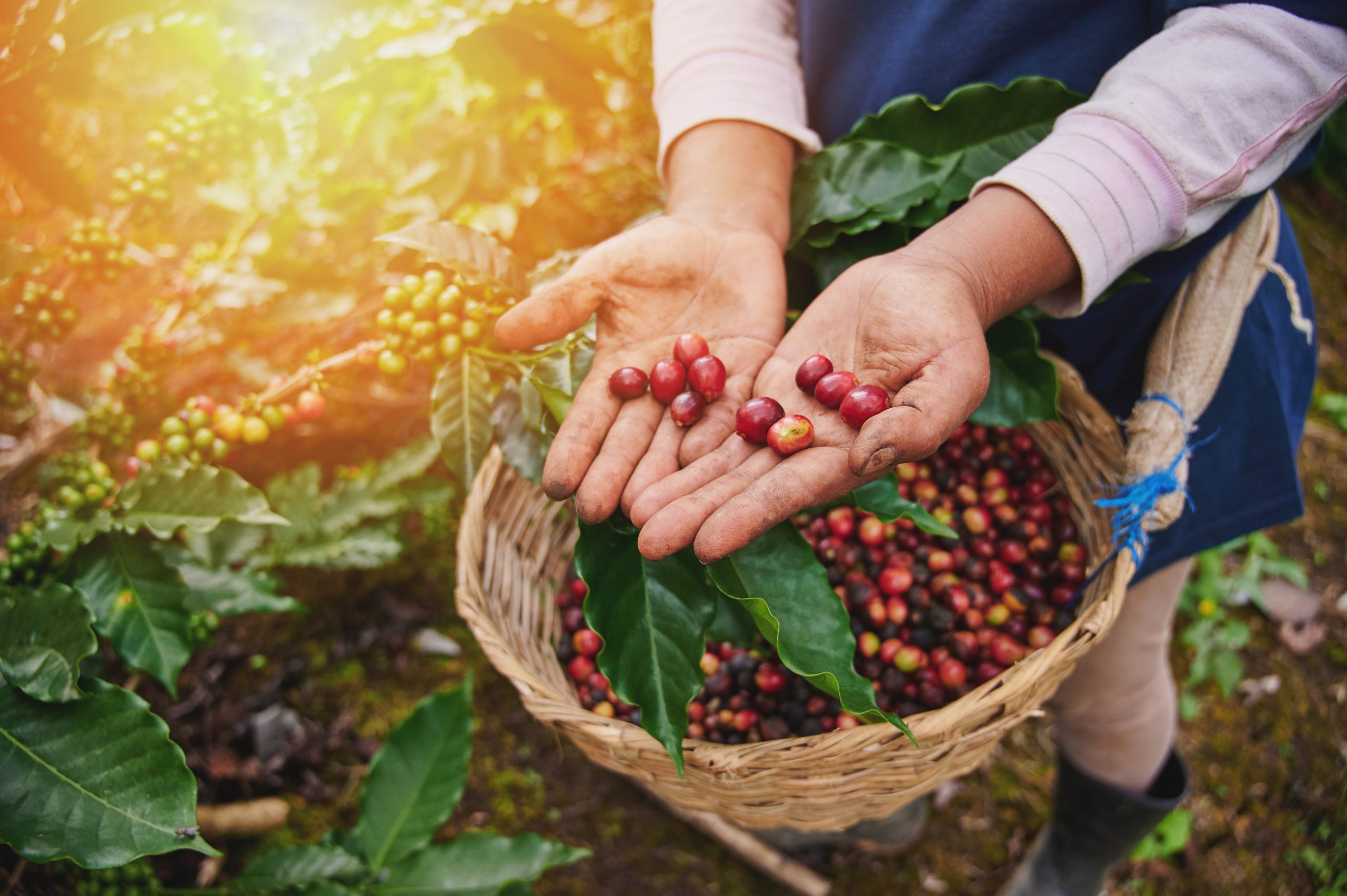
A coffee picker with a cajuela around their waist
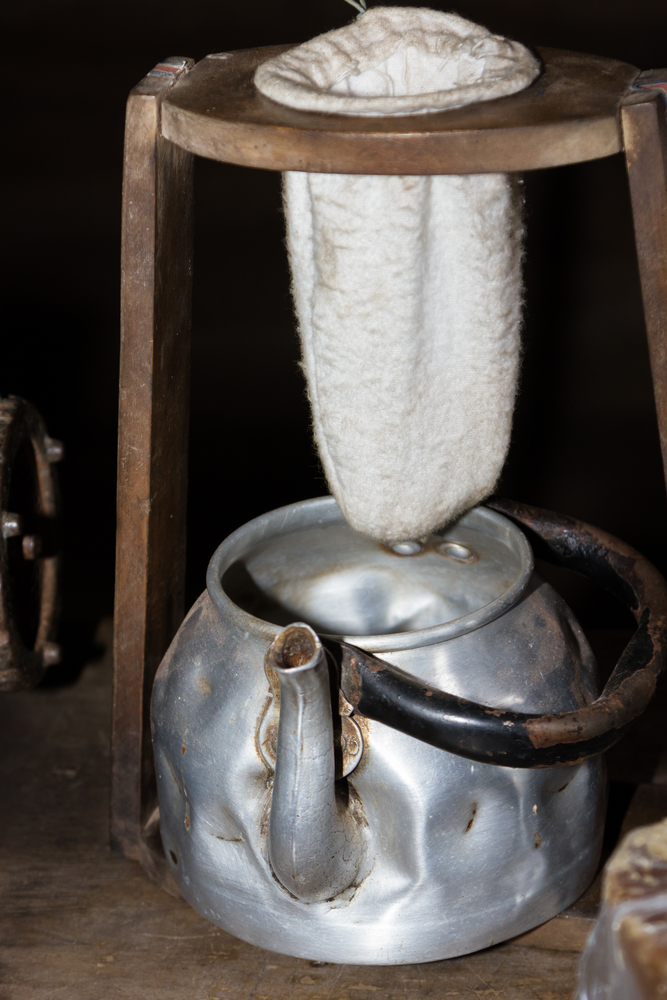
Traditional Costa Rican Chorreador
Traditional brew – the Costa Rican way!
So how do the Costa Rican’s brew a perfect cup of their already perfect coffee? They use a chorreador. The chorreador is a wooden stand that holds an elongated cotton bolisita (Spanish for “little bag”), in which hot water seeps through the coffee grounds and then drips into a container.
The bolista is held open by a circular wire or wooden rim that is attached to a handle. The bolista is suspended from the top of the chorreador stand and hangs above the container or cup.
The word chorreador is related to the Spanish verb chorrear meaning to drip or to trickle and refers to the action of hot water seeping through the coffee grounds and dripping out.
The grind of the coffee is medium-fine and spooned into the bolista, suspended and then the hot water is slowly poured onto the coffee grounds.
Fun Fact #2
The traditional way of brewing coffee in Costa Rica is called “aguas de medias” which literally translates to “sock water”.
Coffee from Costa Rica
Let’s face it, what’s not to like. Smooth, delicious, fruity, refreshing and pure decadence. Costa Rica is not only an amazing country but also the top of the class for coffee production. We thank you Costa Rica for giving the world the taste of magnificent coffee.


